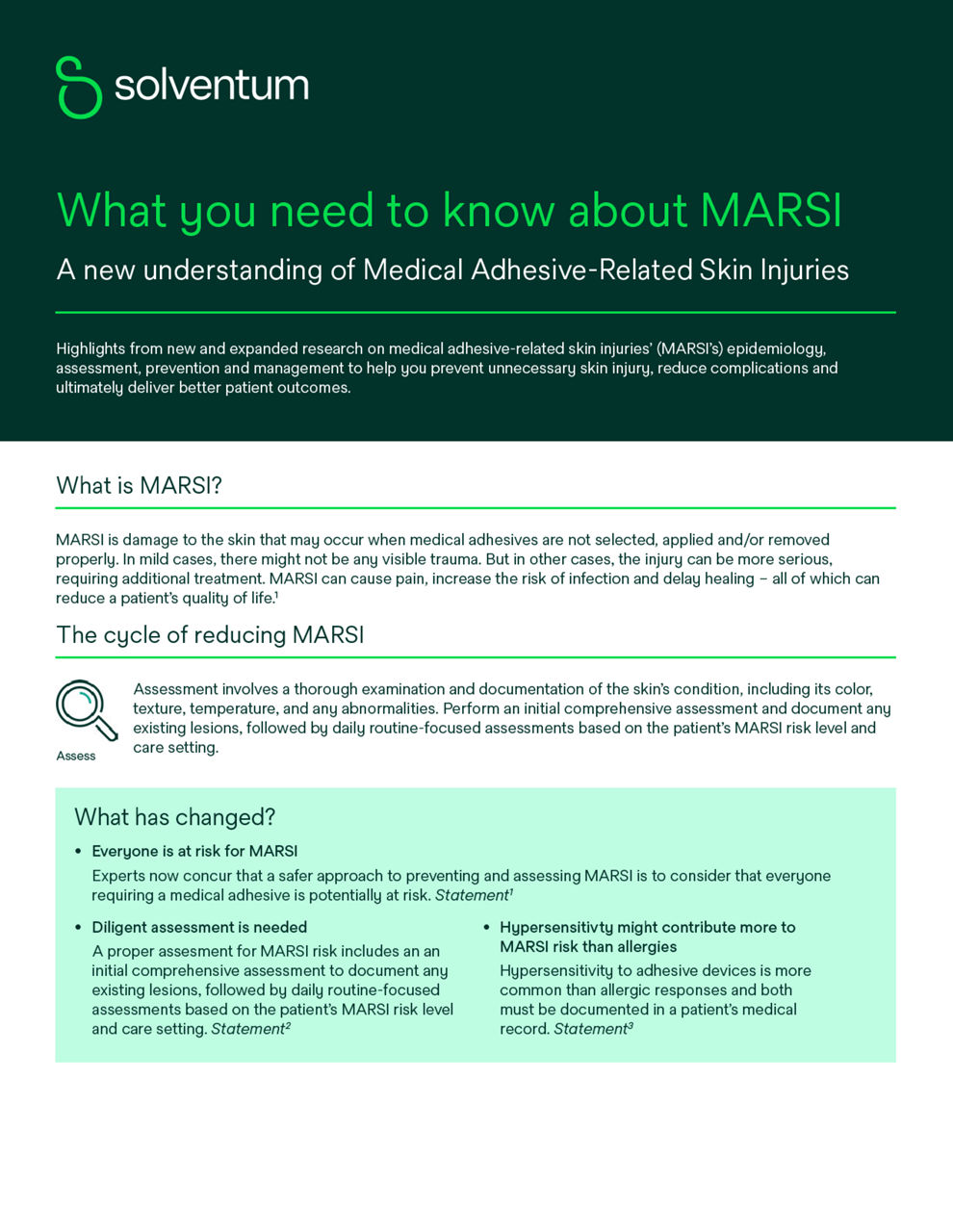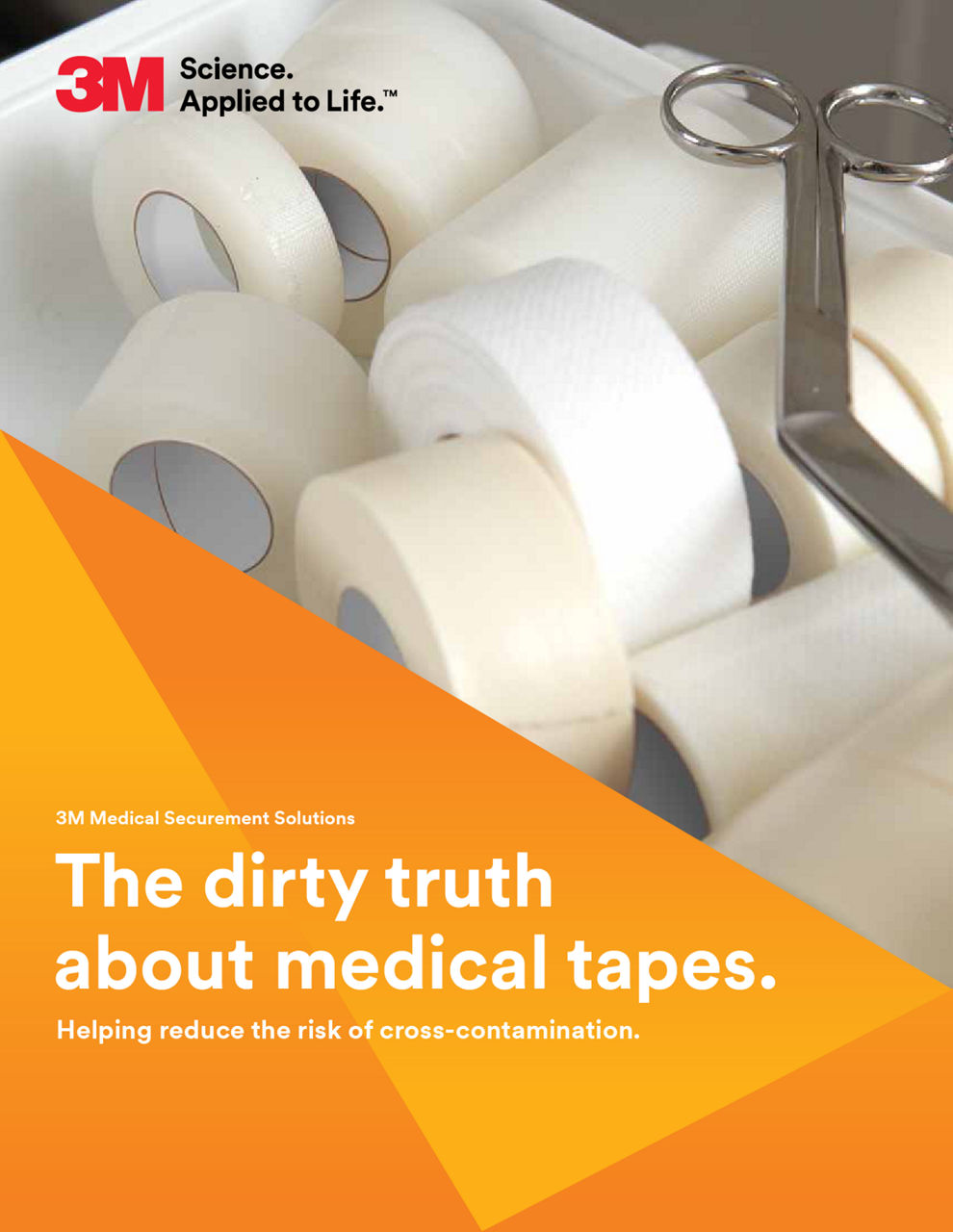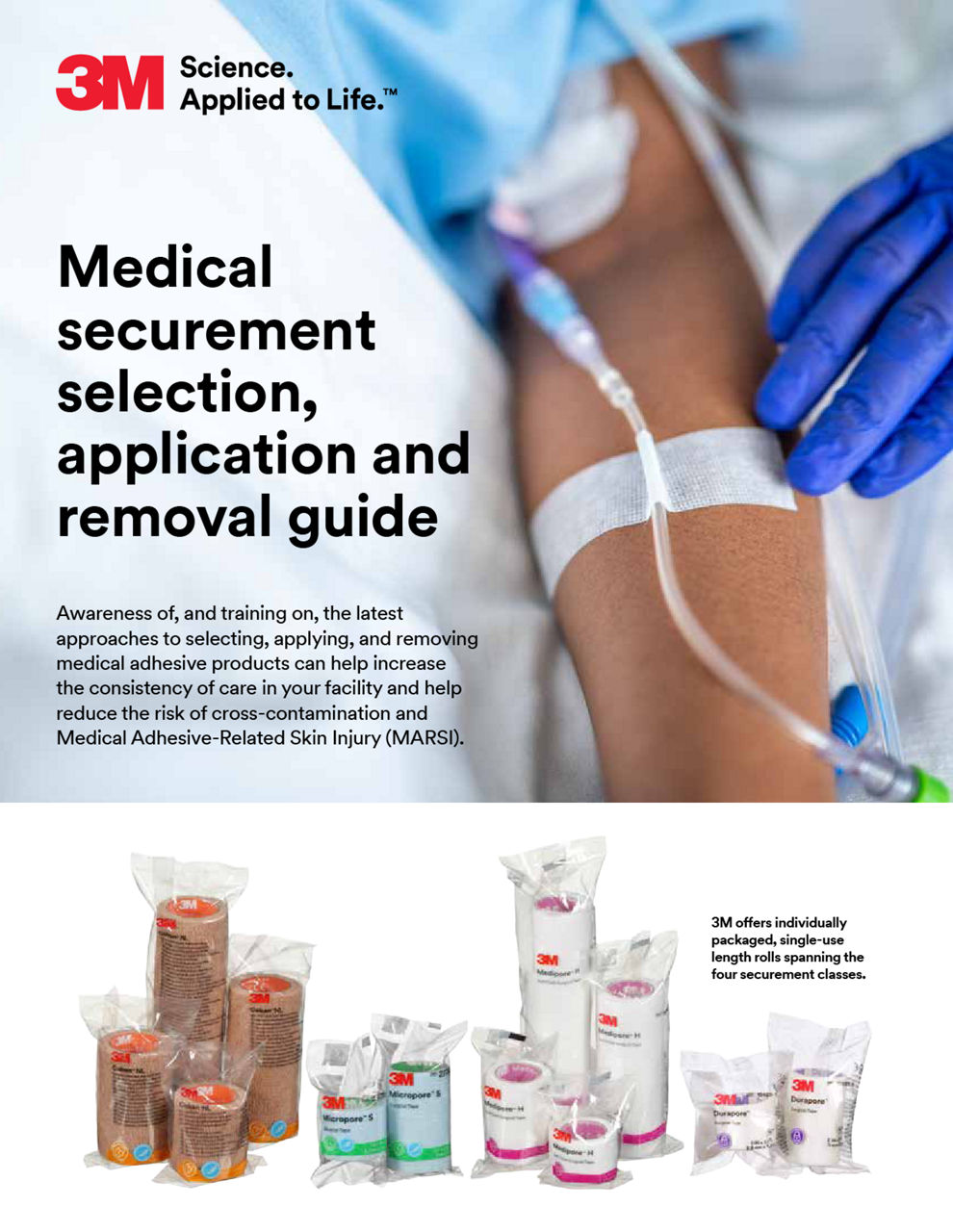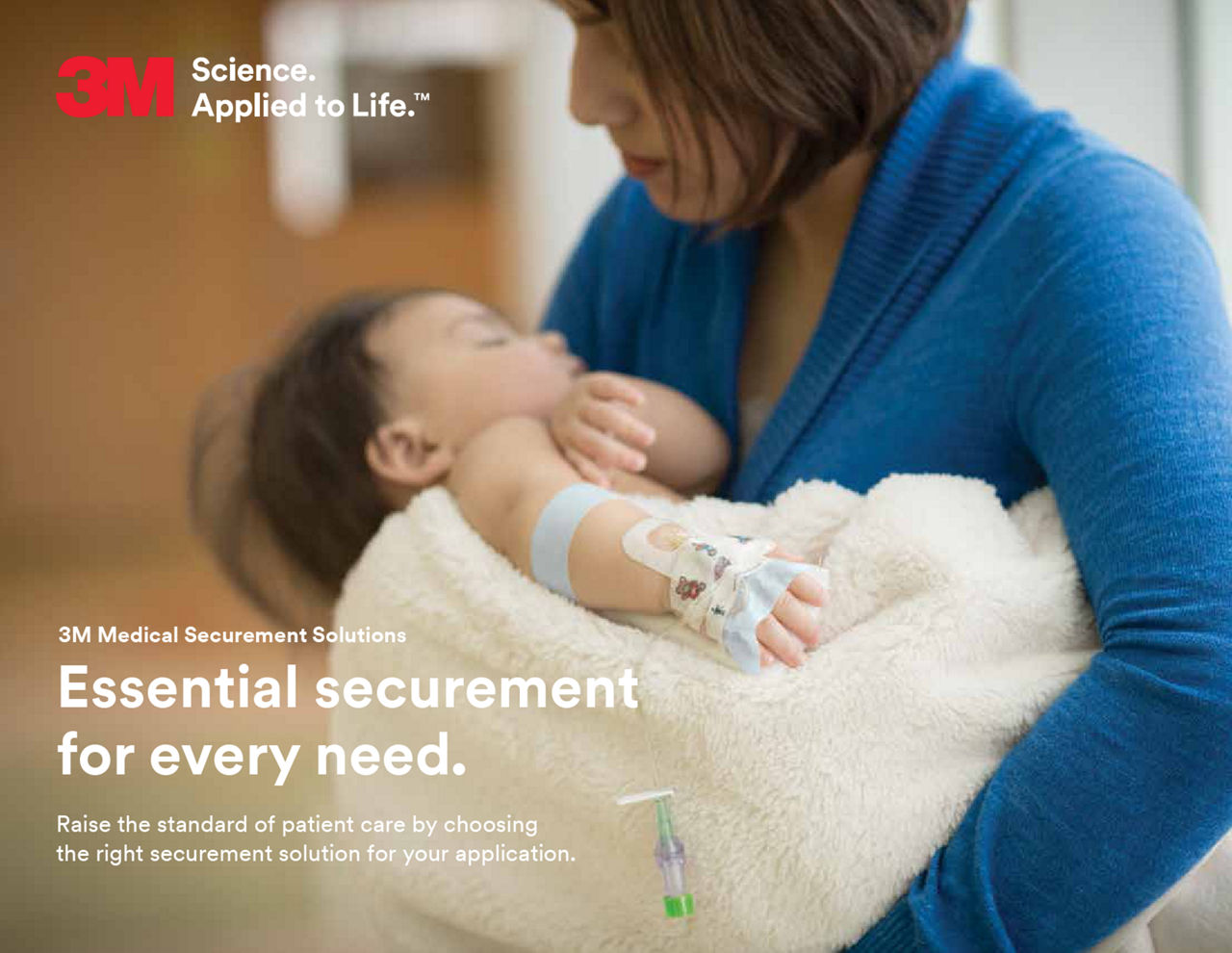Medical tapes, wraps & securement devices
Focus on doing the job while avoiding complications
Tapes and wraps play a vital role in clinical settings, serving many purposes from dressing a site after a blood draw to securing breathing tubes. Tapes and wraps are ubiquitous, used on almost every patient, in every department, across care settings and multiple times a day. Few products in healthcare are used as universally or have as wide of an impact on patients as medical tapes and wraps. Leveraging decades of adhesive innovation, we develop solutions that are not only effective but also help minimize the risk of patient complications related to securement. Complications include:

Inadequate securement
Using our adhesive technologies and technical expertise, we’ve designed tapes, wraps, and securement devices that provide reliable securement for a variety of clinical securement tasks.
Medical adhesive-related skin injury (MARSI) and pressure injury
We are making it possible to perform the clinical job with less risk of skin injury through skin friendly products and educational resources to help with product selection, application and removal.
Cross-contamination
We've tackled the issue of cross-contamination risk associated with medical tapes and wraps, stemming from common storage and handling practices, by introducing new product formats designed to help mitigate these risks.
Clinical challenges related to inadequate securement:
- The impact of poor securement upon the patient can be significant, leading to delays or missed treatments and infection1
- Nasogastric tube dislodgement can lead to an increased risk of aspiration, interruptions in nutritional support, skin breakdown and radiographic exposure1
Clinical challenges related to skin injury:
- Pressure injuries can develop in as little as 6 hours.6
- Nasogastric tube-associated pressure ulcers (NGaPU) are reported to comprise 8% of all medical device-replaced pressure injuries (MDRPIs), yet are frequently neglected and chronically understudied, despite incidence rates ranging from 10-29%.7
Clinical challenges related to cross-contamination:
How to choose the right product for your clinical job

According to the Medical Adhesives and Patient Safety: State of the Science consensus statements, the foremost consideration when selecting an adhesive product is the intended use or purpose.5 That’s why we’ve made it easy to choose the right product for each patient and application, with four classes of securement that address typical needs in most facilities, and that can help you achieve positive patient outcomes.
Tape matters because skin matters. As the body’s largest organ, skin plays a vital role in maintaining our overall health and well-being. Damage to the skin can have significant repercussions, not only affecting our patient’s physical health but also impacting them psychologically.10,11 Selecting the right product to help minimize the risk of skin damage is a choice that is critical to care.
- Despite its importance in clinical care and highly frequent use, only 38% of clinicians say they have received proper training on how to use medical tape.3
- Variable practice from a mentality that ‘tape is tape’ can lead to unnecessary complications.
We simplify securement using the “Core Four” Securement Class framework to group similar clinical jobs by the type of product they require:
- Non-adhesive securement
- Multi-purpose securement
- Flexible securement
- High-strength securement
Our products' core colors and packaging align with these classes to make it easy for you to find the right solution for your specific clinical requirements.
You can be sure that our four best-in-class products can help provide effective clinical performance, minimize skin damage and reduce cross-contamination risk.
Which Solventum medical securement product should you choose?
Non-adhesive
Clinical Applications
- Blood draws
- Dressings
- Immobilization
- Securement for difficult to dress areas (head, fingers, toes)
- Support and mild compression for soft tissue injuries (i.e. strains, sprains)*
*May use a component in a compression wrap system support only under supervision of a wound care specialist.
Multi-purpose
Clinical Applications
- Blood draws
- Light-weight dressings
- IV lines and tubing (secondary securement)
- Non-critical tubes
Flexible
Clinical Applications
- Dressings and added pressure
- IV lines and tubing (secondary securement)
- When swelling or movement is anticipated
- Central venous catheters (secondary securement)
- Chest tubes
- Surgical drain tubes
High-strength
Clinical Applications
- Urinary catheters
- Nasogastric tubes
- Orogastric tubes
- Patient positioning

3M™ Coban™ NL Non-Latex Self-Adherent Wrap
Other products in this class

3M™ Micropore™ S Surgical Tape
Skin performance: these products deliver securement power you need while minimizing damage to skin.
Which Solventum medical securement product should you choose?
Non-adhesive
Clinical Applications
- Blood draws
- Dressings
- Immobilization
- Securement for difficult to dress areas (head, fingers, toes)
- Support and mild compression for soft tissue injuries (i.e. strains, sprains)*
*May use a component in a compression wrap system support only under supervision of a wound care specialist.

3M™ Coban™ NL Non-Latex Self-Adherent Wrap
Other products in this class
Multi-purpose
Clinical Applications
- Blood draws
- Light-weight dressings
- IV lines and tubing (secondary securement)
- Non-critical tubes

3M™ Micropore™ S Surgical Tape
Other products in this class
Flexible
Clinical Applications
- Dressings and added pressure
- IV lines and tubing (secondary securement)
- When swelling or movement is anticipated
- Central venous catheters (secondary securement)
- Chest tubes
- Surgical drain tubes
High-strength
Clinical Applications
- Urinary catheters
- Nasogastric tubes
- Orogastric tubes
- Patient positioning
Skin performance: these products deliver securement power you need while minimizing damage to skin.
Securement devices for specific jobs and standardization
While medical tapes and wraps provide versatility in clinical settings, there is a need for products that are designed to address specific clinical needs and enable standardization of practice. Our securement devices deliver the performance you need while minimizing damage to skin. These products provide reliable securement, are easy to use, and help promote patient safety to give you the confidence to do your job.
Helpful resources
References
- Lorente L. et al. Accidental catheter removal in critically ill patients: a prospective and observational study. Crit Care. 2004;8:R229–R233. doi: 10.1186/cc2874
- Cosentino C, Fama M, Foà C, Bromuri G, Giannini S, Saraceno M, Spagnoletta A, Tenkue M, Trevisi E, Sarli L. Unplanned Extubations in Intensive Care Unit: evidences for risk factors. A literature review. Acta Biomed. 2017 Nov 30;88(5S):55-65. doi: 10.23750/abm.v88i5-S.6869. PMID: 29189706; PMCID: PMC6357578.
- 3M 2018 Medical Tape Market Research. 563 completed clinician interviews. On file at 3M.
- C. Noonan, S. Quigley and M. A. Curley. Skin integrity in hospitalized infants and children: a prevalence survey. J Pediatr Nurs 2006 Vol. 21 Issue 6 Pages 445-53. (https://pubmed.ncbi.nlm.nih.gov/17101403/)
- McNichol L, Lund C, Rosen T, Gray M. Medical adhesives and patient safety: state of the science. Consensus statements for the assessment, prevention and treatment of adhesive-related skin injuries. J WOCN. 2013;40(4):365-380.
- Gefen A. How much time does it take to get a pressure ulcer? Integrated evidence from human, animal, and in vitro studies. Ostomy Wound Manag 2008:54(10):26-35
- Seder CW, Stockdale, W., Hale, L., Janczyk, R.J.: Nasal bridling decreases feeding tube dislodgment and may increase caloric intake in the surgical intensive care unit: A randomized, controlled trial. Critical Care Med. 2010, 38. 10.1097/CCM.0b013e3181c311f8. Esperón Güimil JA FRM, Escudero Quiñones AI, et al. : Sondas endonasales como causa de las úlceras por presión en el paciente crítico. Enferm Intensiva. 2009, 20:8. 10.1016/S1130-2399(09)70662-5
- Berkowitz DM, Lee WS, Pazin GJ, Yee RB, Ho M. Adhesive tape: potential source of nosocomial bacteria. Appl Microbiol. 1974;28 (4):651-654.
- Harris PN, Ashhurst-Smith C. Berenger SJ, Shoobert A, Ferguson JK. Adhesive tape in the health care setting: another high-risk fomite? Med J Aust. 2012;196(1):34.
- Adam EK, Quinn ME, Tavernier R, et al, Diurnal cortisol slopes and mental and physical health outcomes: a systematic review and metaanalysis. Psychoneuroendocrinology. 2017; 83:25-41.
- Jozic I, Stojadinovic O, Kirsner RSF and Tomic-Canic M, Skin under the (spot-)light: cross talk with the central hypothalamic pituitary adrenal (HPA) axis. J Invest Dermatol. 2015; 135:1469-1471.










